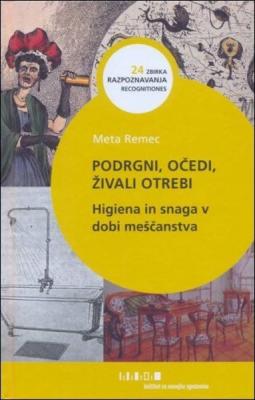Rub, Tidy, Tend to Animals: Hygiene and Sanitation in the Bourgeois Period
Keywords:
Hygiene habits, History, Slovenia, 18th-20th centuries, Personal hygiene, health, diseases, cleanliness, washing, historical inspections, clothing, housing, waste, furniture, TuberculosisSynopsis
In the 18th century, under the influence of ideas stemming from the enlightenment, the outlook on the issue of health and disease also changed. By drawing the final line between theology and medicine, which divided their jurisdictions in this period – the former becoming responsible for the soul and the latter taking charge of the body – a new attitude to diseases also established itself. Sickness was no longer seen as punishment for sin and consequence of God’s anger: people started falling ill because they did not observe the hygiene standards. When the conviction prevailed that diseases could at least be prevented if not entirely cured by direct interventions and improvement of the environmental sanitary conditions, the state apparatus become an increasingly important factor and as such it kept intervening in lives of the people more and more directly. The state started establishing its authority in the field of health, hygiene and care for a suitable living environment as well as accepting more and more responsibility for the wellbeing of the individuals and the whole community. Thus the 19th century became a period of extensive social, health and hygiene reforms, undertaken by the state in order to regulate, alter, and establish the supervision over even the most intimate aspects of the people’s lives through largescale projects. This gave rise to the opposition between the interests of the individuals, who wanted to eat, drink and enjoy life to the fullest, and the interests of the community, which mostly strived for hardworking, healthy and vigorous citizens, workers and soldiers. The aim was to overcome the resignation which had reigned among people in connection with health and disease since the antiquity. The preparation of precise studies of the environment and living conditions began and medical topographies, whose analyses were basically intended for the expert public, became a part of the prevention campaign. The awareness of the connection between the human health and the environment they lived in had already been completely affirmed, and the 19th century was definitely the period when social and hygiene reforms started enter people’s homes and their intimacy.

Published
Print ISSN
License

This work is licensed under a Creative Commons Attribution-NonCommercial-NoDerivatives 4.0 International License.

